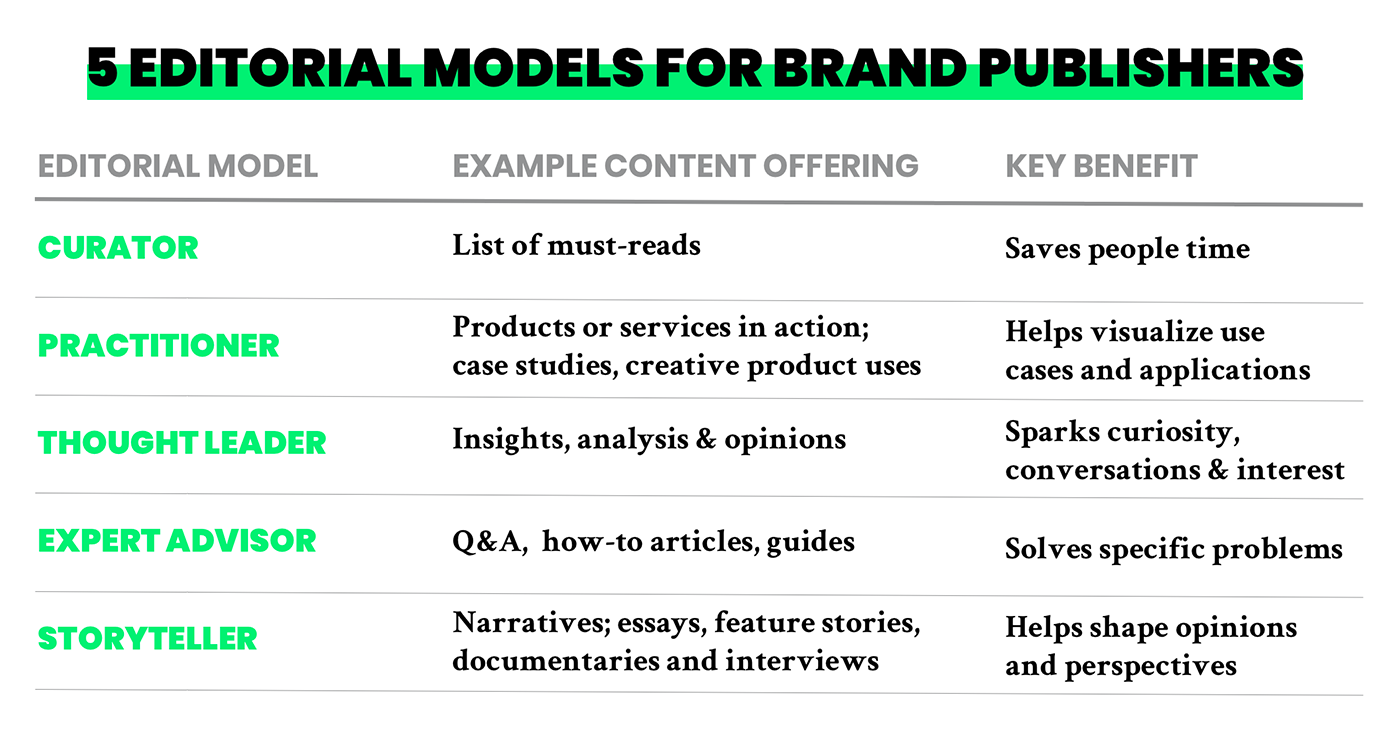A simple framework to add structure, purpose and focus to your branded content approach
Serving your audience through content? Start by addressing their information needs.Should brand newsrooms even really cover news?
It sounds like a bizarre question — of course a brand newsroom would cover news as its mission. Right?
Not necessarily.
It’s natural to start with news as a first step in the process of determining your content strategy. News dominates our headlines and lives. We pay attention to it. It can consume us. As a marketer, I’d love to have that kind of audience involvement with my content.
But the reality is that producing news is demanding, difficult and designed for a different purpose than what most brands are trying to achieve. And there are a lot of other types of content that can get marketers closer to their business goals while working within the resources of their organization.
By using a framework for understanding the role your content plays in the lives of your audience members — and building backwards to a product that would work to capture their attention most effectively — you’ll be on the right path to building structure and loyalty into your content brand. Consider the following five types of editorial content models, each with a specific outcome intended for the audience member.

The “Curator” offers an efficiency service to readers. What it says to your audience: We’ll read everything so you don’t have to and we will share only the most important stuff. Over time, you’ll come to rely on this service and we’ll have earned you as a loyal reader. In niche industry markets in particular, this can be a very effective strategy; you can start it with just a newsletter and expand it to a website later to keep costs low. (Example: Think The Skimm but for brands, or check out Relationship Matters by the software company FullContact)
The “Practitioner” gives context to your brand by showing it in practice. What it says to your audience: We’ll share practical applications and on-label and offbeat ideas to inspire you to use our products – or at least about using them. You’ll want to see this stuff because it sparks ideas and inspiration and helps you visualize how our product or service might be relevant to your life. Think about travel, weddings, design, fashion, etc. People want to see what others have done in order to copy (and customize) it for ourselves. People want to hear from, learn from, and steal ideas from people who are like them. (Example: Check out IKEA’s Home Tour series [B2C] or Marriott’s Meetings Imagined [B2B])
The “Thought Leader” provides perspective and a point of view. What it says to your audience: From in-the-moment perspective to predicting the future, we’ll make you smarter by providing context or insight to a trend that you haven’t thought about before. We’ll share what we stand for and how we view the world so that you might be inspired to join us – or at least think differently. In high-growth and high-stakes spaces — tech, policy — this type of content tends to be very in demand, as people seek expert analysis on specific topics and industries. Think: The Future of ____, The State of ____ or an Unexpected Take on _____. (Example: Try Longitudes by UPS)
The “Expert Advisor” solves problems and guides the way. What it says to your audience: We’ll provide answers to your biggest (and smallest and most specific) questions. We’ll also share our expertise, our best practices and help guide you on your journey to be a better [whatever you want to be]! This works in a lot of spaces, in particular if your org is in a highly regulated area, or if there is a lot of consumer confusion (taxes, healthcare, compliance). This content approach works in nearly every market, from software companies to DIY marketplaces to everywhere in between. (Example: Check out this Dear Doctor series, on The Well by Northwell Health or the how-to section in REI’s Co-Op Journal)
The “Storyteller” showcases and celebrates the people, places and things that matter most (or should) to an industry or cultural space. What it says to your audience: We stand for something above and beyond our products and services. We serve, celebrate and showcase the people who are making a difference in our space. For instance, here’s the unlikely story of how [our hero] conquered [a challenge] and lived to [share the lessons] of the quest. This content, done well, resonates with audiences by connecting with them emotionally and showing the point of impact a brand or organization has in the real world. Stories tell but can also sell: a feeling, an idea, or even a product. (Example: The Well’s True Story section)
This is not an exhaustive list by any means. But it’s intended to be a starting point in thinking about your content as a tool for your brand, goals and audience specifically. You already know it can be a tool for your marketing; if you can provide information that solves a person’s given problem, makes them smarter, etc., you’ll be closer to a productive, symbiotic relationship with them in which each gets something out of the exchange.
When brands act more like media companies, is doesn’t need to mean you’re pumping out high volumes of news content. It just means you need to have a niche, a unique angle, and are adding value to your audience’s lives in a way that ultimately drives value for your business. R
Subscribe
Get our weekly newsletter for tips on how to drive better content marketing performance.
For a regular stream of ideas, research and links we find helpful. And of course, to say hi!
